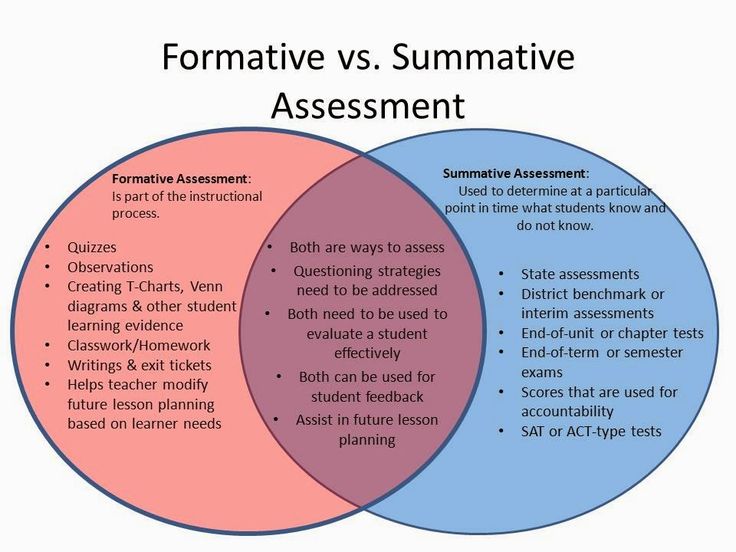Post 2 The benefit of formative evaluation and summative evaluation in learning

I think formative evaluation and summative evaluation are both very effective learning methods. Formative evaluation is to gradually improve and perfect the teaching activities in the teaching process to grade students, processes and results. The summative evaluation is to evaluate what students have learned in a large learning stage. Purposeful summarization and evaluation can often urge learners to study independently and strenuously. Because after the summative evaluation, learners can see the results they get. Learners can reflect and share through group communication. With this method, learners can share what they have learned recently. In our daily learning life, the degree of knowledge mastery is the most intuitive assessment content for the effectiveness of learning. There are many different testing methods. Among them, the examination is the most popular assessment tool to test the degree of learning mastery. For teachers, the examination is a relatively easy method to create and manage the assessment of students’ learning mastery, and the results obtained after the test are more intuitive.
Like in economics courses, different teachers will use different methods to check students’ learning outcomes periodically. Many teachers do not usually assign any homework to students, usually, there are only two to three exams in a semester. Teachers gradually improve and perfect their teaching methods through the performance of students in the learning process. After the first mid-term exam, teachers can use the students’ first mid-term exam results to determine the difficulty of the courses they teach and make improvements. This is an educational process of formative evaluation. Many students may not keep up with the teacher’s course in the initial learning process and get very low scores in the first exam, but this does not mean that they will fail the class. Because the teacher’s syllabus often mentions that the higher midterm exam may account for more total scores (eg: better midterm 25%, worst midterm 15%, or better midterm will cover worse midterm). This approach can often motivate students to do better in the rest of the semester. Students will not affect their learning progress because of a mistake, and they can do better the next time.
Students can also know their shortcomings from their first test afterward they can improve their learning methods and get better results in the upcoming exams in the rest of the semester. The final exam is a summative evaluation. It is a summary evaluation of what students have learned during a large learning stage. The periodic evaluation during the mid-term exam will not significantly impact the summary evaluation (in economics). In the department’s final exam, the final exam often accounts for a large proportion (eg 40%-50%). This kind of purposeful summative assessment can often urge students to study independently, and students can see their learning results after the final exam.
And these two evaluation methods can make teachers and students realize the good and bad aspects of their own work at this stage. Teachers can observe students’ exams to understand the difficulty of their own teaching methods and make improvements. Students can also use exam results to understand their mastery of knowledge points.
Photo reference:
History and Government: What are the functions of formative evaluation?